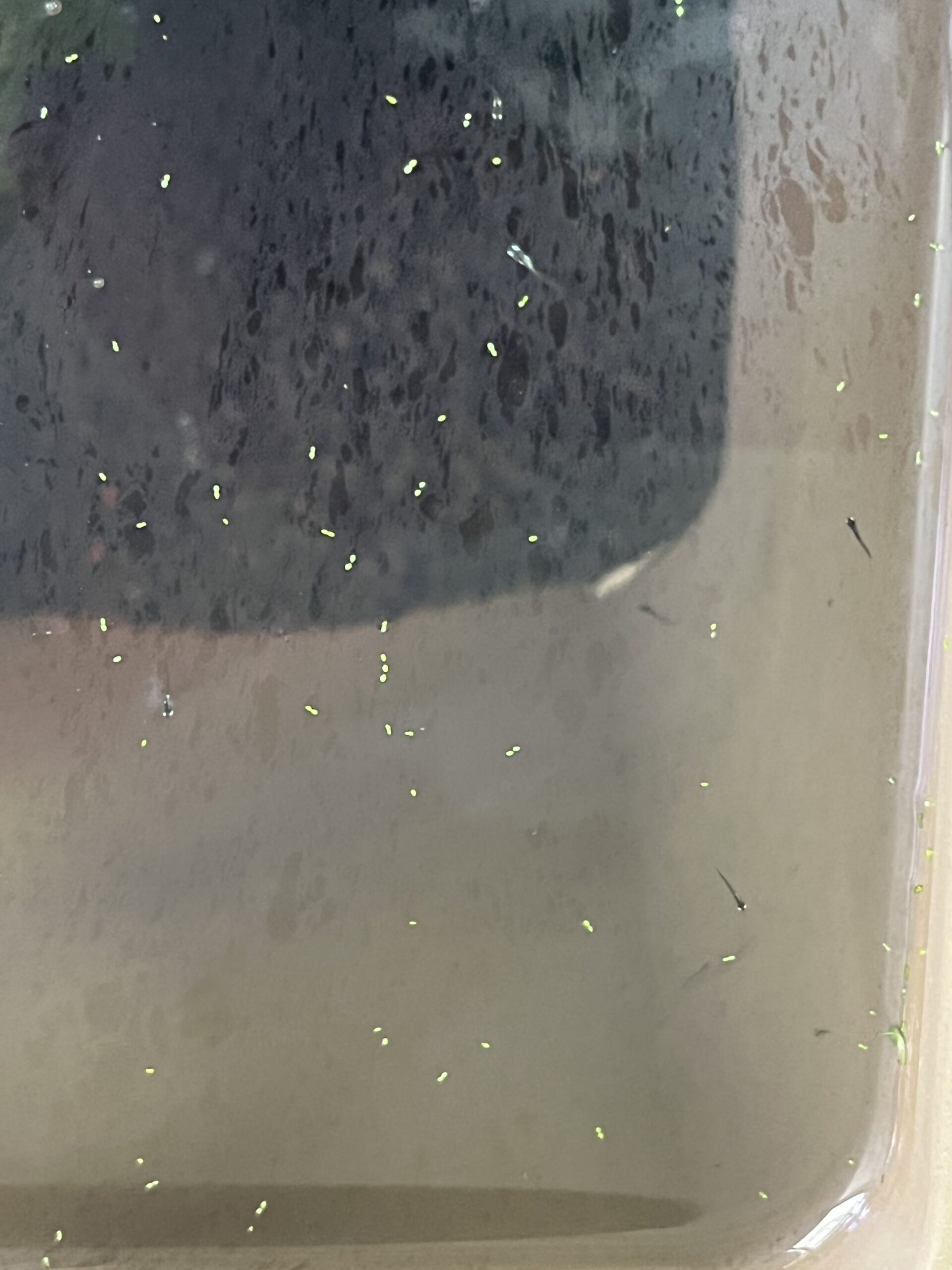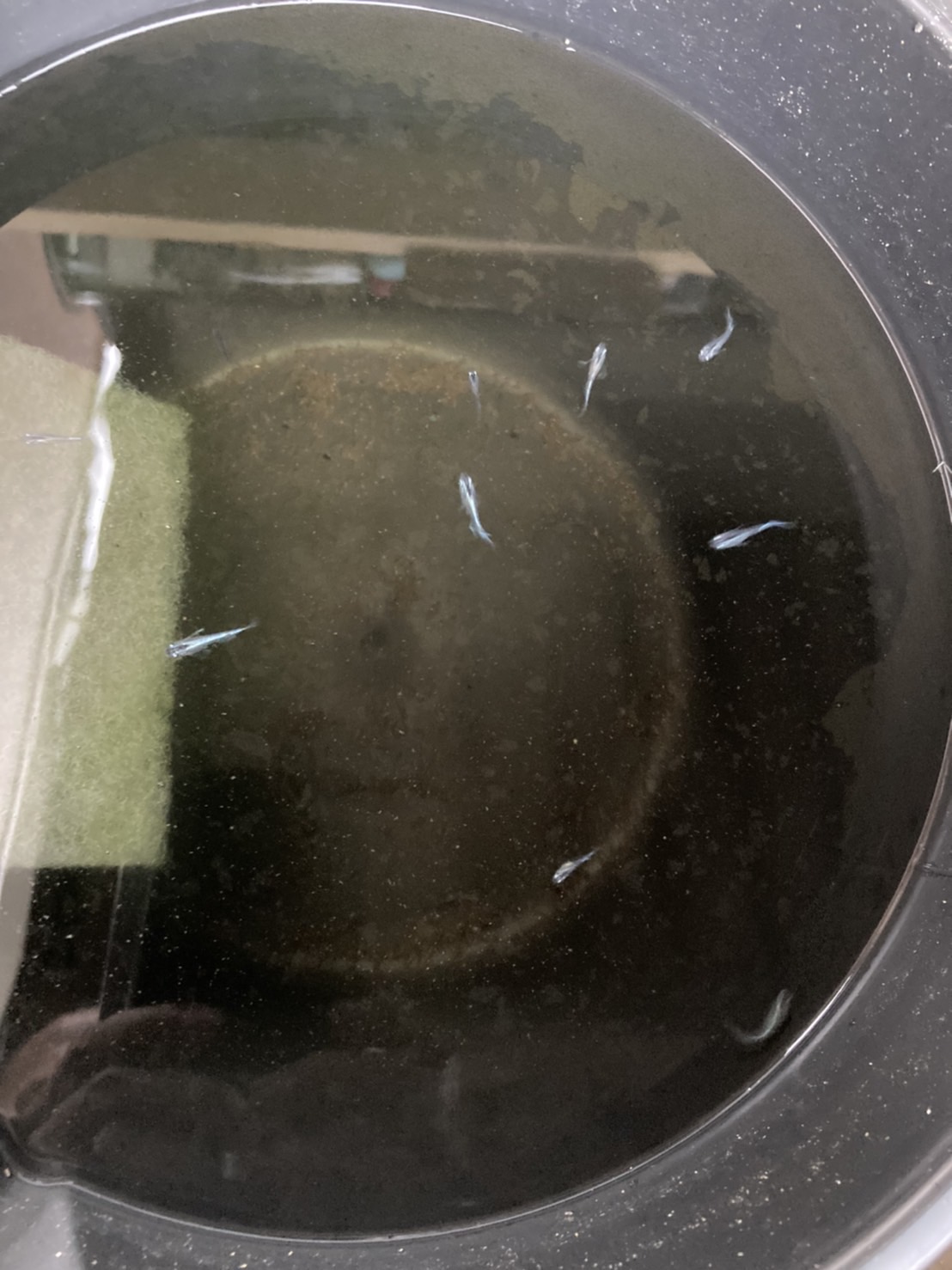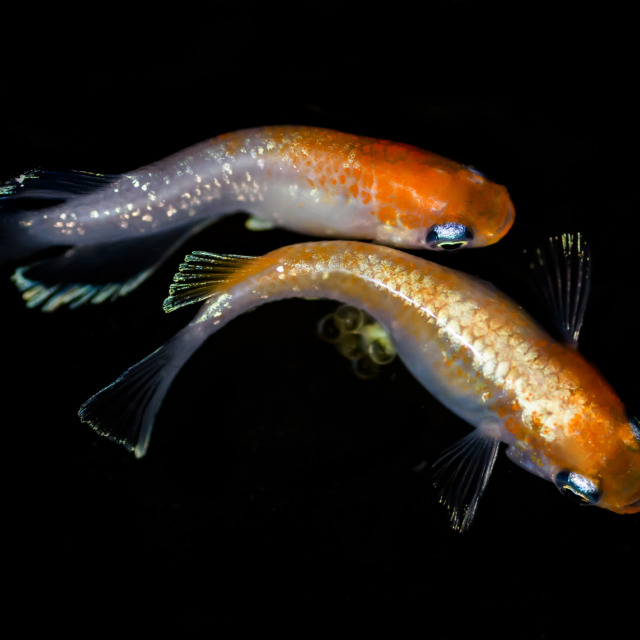Learn how to raise medaka fry using practical examples. If you’re interested in keeping your medaka fry and needle fry alive and healthy, read on.
What Are Medaka Fry? How Do They Differ from Needle Fry?
| Needle Fry | Fry |
 |
 |
Medaka fry are baby medaka. Newly hatched medaka are also called fry but due to their small, needle-like appearance, they’re often referred to as “needle fry.”
Needle fry have a different shape than adult fish. Their fins aren’t yet developed, giving them a tadpole-like appearance.
After about 2 weeks to a month, they start to resemble smaller versions of adult medaka, and at this point, they are usually referred to as fry.
Detailed Tips on Raising Medaka Fry and Needle Fry
Here’s how to properly raise medaka fry and needle fry.
Just After Hatching

Newly hatched medaka needle fry don’t eat immediately. For the first 3 days or so after hatching, they absorb nutrients from their yolk sac, a nutrient-rich pouch attached to their abdomen.
After about three days, the needle fry start eating, but their small mouths prevent them from consuming standard feed. Instead, crush the regular feed into finer particles, use special fry feed, or offer infusoria, PSB, or green water.
Infusoria or other live foods can remain in the fry tank without issue, so it’s okay to introduce them right after hatching.
That said, if you only have a few needle fry, they can survive by eating microorganisms in the tank, so there’s no need to worry about preparing infusoria. Your parent medaka tank should contain microorganisms, so you can add tank water and plant fragments to the fry tank.
Carefully Monitor Water Changes and Water Flow
While still needle fry, medaka have weak swimming ability and can struggle against water currents, so it’s better not to use filters in their tank. Additionally, carefully match temperatures when changing water or transferring needle fry to a new tank, as they are sensitive to sudden changes.
Physically, needle fry are fragile, but they’re highly resistant to water quality deterioration, so they can often go without water changes early in life. However, it’s recommended to prepare a larger container before hatching to avoid extreme pollution.
How to Raise Medaka Needle Fry and Fry
As needle fry grow and become more like adult medaka, they still have small mouths and may struggle with standard feed.
While some specialized fry feed is available, giving live food will help them grow faster. Many people use infusoria and green water for needle fry. These are easy to culture, so it’s good to keep them in stock.
If you’re raising only a few fry for fun, simply crush adult feed into smaller pieces. However, this approach may lead to poor feeding and extra cleaning due to uneaten food.
Raising Medaka Fry

At about one month old, fry will have grown to resemble adult medaka. At this point, they can eat daphnia or standard feed. They will continue growing with consistent feeding, often reaching adulthood in less than two months.
Should Medaka Needle Fry and Fry Be Raised Outdoors?
Medaka fry and needle fry grow better outdoors because exposure to sunlight significantly accelerates their growth. However, they can still be raised indoors, albeit at a slower pace.
Medaka Fry and Needle Fry Diseases
Once medaka reach fry size, they become resilient and rarely get sick. However, needle fry are more sensitive and can quickly fall ill. If they become ill, they swim erratically and curl up, resembling actual needles.
Even adult medaka often die if they become sick. Unfortunately, using salt baths or medication will have little effect on needle fry and fry in this condition.
Therefore, it’s essential to monitor and manage water quality and temperature to prevent illness in fry and needle fry.
Tips to Prevent Medaka Needle Fry and Fry Mortality
Strong water flow is the primary reason for high mortality in fry. Even air pumps’ bubbling can harm newborn needle fry, so avoid filters or reduce their output while placing plants to soften currents.
Medaka fry and needle fry are also highly sensitive to sudden water temperature changes. It’s best to have pre-prepared water at room temperature or adjust the temperature using hot and cold water.
Water changes are generally not recommended for needle fry, so use a spacious container for raising fry to ensure stability.
Sunlight is the Ultimate Solution
Raising medaka fry and needle fry indoors can be tricky, but keeping them outdoors makes their care much easier. In spring and summer, raising fry outdoors requires far less effort.











No comments yet.